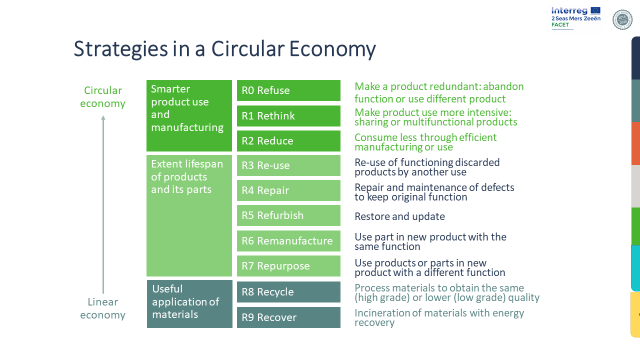Implementing CE-solutions: the 9R-strategies
Ideally, all materials stay within the economic production and consumption system. This ultimate circularity, in which a product chain is closed because the materials can be applied over and over again, while retaining their original quality. If these can be applied in a similar product while no additional natural resources are necessary, then waste is a concept of the past. However, this is very hard to achieve in reality and full circularity is therefore the highest level, or objective within a Circular Economy.
There exists a hierarchy of circularity strategies, different levels to reduce the consumption of natural resources and materials, and minimize the production of waste[1]. They can be ordered for priority according to their levels of circularity (Figure 1).
More information and examples with regards to these 9R-strategies can be found here [link to 9R-strategies ppt on FACET wiki]. Within the FACET-project these circularity strategies are linked to the concept of value chains to make them more tangible.
References
[1] Figure: Potting, José, et al. Circular economy: measuring innovation in the product chain. No. 2544. PBL Publishers, 2017.

